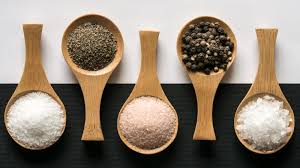
In the culinary world, few combinations are as ubiquitous and beloved as pepper and salt. These two seasonings, often https://pepperandsalt.kz/pryanosti/ found side by side on dining tables across the globe, play an essential role in enhancing the flavor of a myriad of dishes. But their story goes beyond mere seasoning; it’s a tale of history, culture, and gastronomy that has evolved over centuries.
A Brief History
Salt has been a fundamental ingredient in human civilization for thousands of years. Ancient cultures recognized its value not only for flavoring food but also for preserving it. The earliest records of salt production date back to around 6000 BC in China. Its significance was so great that it was even used as a form of currency in various societies, illustrating its essential role in trade and economy.
Pepper, on the other hand, is a relatively newer addition to the spice rack. Originating from the Malabar Coast of India, black pepper has been cherished since ancient times, often referred to as “black gold.” The demand for pepper drove explorations and trade routes, leading to the age of discovery in the 15th century. Like salt, pepper was once a luxury item, valued for its ability to add depth and complexity to dishes.
The Science of Flavor
The combination of salt and pepper is a study in contrasts. Salt enhances the natural flavors of ingredients, acting as a flavor amplifier. It reduces bitterness, enhances sweetness, and rounds out flavors, making dishes taste fuller and more balanced. Without salt, many foods can taste flat and uninviting.
Pepper, with its unique pungency and warmth, introduces a distinct kick that can elevate a dish from ordinary to extraordinary. The active compound in black pepper, piperine, contributes to its heat and can also aid in digestion. The interplay between the two creates a harmonious balance, making it a staple in both professional kitchens and home cooking.
Culinary Uses
The versatility of pepper and salt knows no bounds. In everyday cooking, a simple sprinkle of salt and pepper can transform vegetables, meats, and grains. Whether it’s a classic steak seasoned with coarse salt and freshly cracked black pepper or a vibrant salad brought to life with a dash of both, this dynamic duo enhances the natural essence of ingredients.
In gourmet cuisine, chefs often experiment with different types of salts—such as fleur de sel, Himalayan pink salt, or smoked salt—each imparting unique flavors and textures. Similarly, a variety of peppercorns, including white, green, and pink, offer diverse flavor profiles, from fruity to floral.
Cultural Significance
Beyond their culinary applications, pepper and salt carry cultural significance. They are often symbols of hospitality and togetherness. In many cultures, offering guests a meal seasoned with salt and pepper is a gesture of goodwill and generosity. In folklore, salt has been associated with purification and protection, while pepper has historically been considered a remedy for ailments.
Conclusion
Pepper and salt may seem like simple seasonings, but their impact on cuisine and culture is profound. They have traveled through time, crossing borders and bridging culinary traditions, always enhancing the flavor of our meals. The next time you reach for the salt shaker or grinder, take a moment to appreciate the rich history and remarkable journey of these humble yet essential ingredients. Together, they embody the essence of flavor—simple yet powerful, familiar yet full of possibilities.
